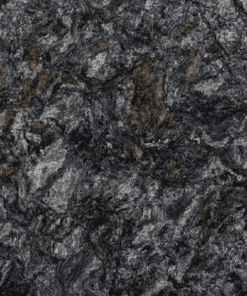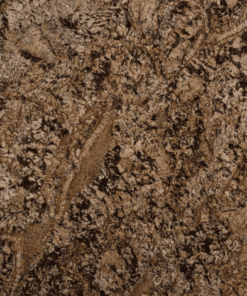Beautiful marble flooring was once limestone before making its way into our houses. The dense, variegated stone that resulted from millions of years of metamorphosis—intense heat and pressure—can be polished to a brilliant sheen. Since it is a natural commodity, marble is now mined all over the world and is highly valued for worktops and floors. Polished marble reflects light to add a sense of refinement and make spaces appear larger. Similar to many other forms of stone flooring, marble is frequently put in “wet” areas like bathrooms and kitchens, where frequent water splashes may be easily wiped away without doing any harm. Marble is, however, prone to stains, particularly from very acidic and alkaline substances, such as coffee, juice, wine, soda, vinegar, berries, tomato products, cigarettes, oil and grease, baking soda, ammonia, harsh detergents, bleach, and, in some regions of the country, “hard” tap water. Marble is not the best material for homes with pets since it is highly susceptible to stains from pet pee, which can etch the floor permanently and cause irreversible damage. The easiest approach to maintaining the pristine appearance of your marble is to buy a high-quality marble sealant and quickly blot up any spills with a soft, absorbent cloth. Be cautious to blot the stains rather than rub them; if you scrub or rub marble too vigorously, you risk damaging the surface and dulling its appearance. If you’re considering adding this gorgeous flooring to your house, keep reading to find out more about the numerous types of marble that are available, how to select the one that will fit your needs and budget and some DIY advice in case you decide to install marble flooring yourself.
Check out our Imported Marble Products
There are several marble flooring variations, which can be divided into three primary groups.
Tiles made of marble are available in a variety of hues and surface patterns. The veining is the term for the lines of contrasting color that run through the surface; it can be strong and obvious or subtle and hardly perceptible. Although there are more than a hundred different kinds of marble, there are only three basic types, each of which is distinguished by its appearance.
- Carrara: The huge pillars and intricate statues made of this famous white marble flooring option may be found in ancient Greece and Rome. Today, Carrara marble flooring tiles are only available in a few shades, ranging from light to warm white, and they have medium to light grey veining on their surfaces.
- Calacatta: While Carrara and Calacatta are both white marbles, Calacatta is closer to pure white in hue and has darker grey veining, which gives it a striking contrast.
- Breccia: If black marble floors have captured your attention, you probably want to look at Breccia. Compared to Carrara and Calacatta, Breccia marble is more colorful and hospitable. It comes in a variety of darker tones, such as warm golds, tans, dark browns, black, and reds. Breccia marble’s dark grey and black veining frequently takes the form of elaborate swirls and includes precisely round outline veins that resemble bubbles trapped beneath the surface.
Not all marble flooring is dazzling, and it shouldn’t be.
Depending on the area, either a high gloss or a matte finish can be applied to the aforementioned types of marble.
• Polished marble: The most popular type of marble flooring has a high-gloss appearance that is obtained by grinding the surface with a machine used for stone polishing. Marble’s veining is highlighted by polishing, which also gives the floor a gleaming, opulent appearance. Polished marble will maintain its reflective finish for many years with the proper maintenance (see below).
• Honed marble: This form of finish is only softly polished, producing a flat, smooth surface without creating a shine. Compared to more glitzy polished marble, honed marble floor tiles give a robust surface with a gentle matte texture that some people find more approachable.
The most typical size of marble tile used in residential installations is less than 2 feet wide.
Marble flooring is available in a variety of tile sizes, from tiny 2-inch by 2-inch squares to enormous 6-foot by 8-foot slabs. Marble tiles are rarely larger than 2 feet by 2 feet for household use because larger slabs, which are very heavy, need professional installation. Large slabs are typically only found in public and commercial structures. Residential tile thicknesses range from 14 to 34 inches, whereas commercial marble slabs can be up to 2 inches thick.
Density and surface design both affect quality. Although there is no industry standard, a few things can give you a hint about the tile’s quality.
• Mesh-backed tiles are affixed to a fiberglass resin backing. These marble tiles are often of lesser quality, less solid, and more prone to scratching or shattering. Mesh-backed tiles are appropriate for spaces with minimal activity, such as restrooms, but they are less attractive in areas with high use since they could become worn out more quickly.
• Filled spaces may be present in tiles of lower quality. If you turn the tile at a 45-degree angle, you might detect irregular dull patches that show holes in the tile’s surface have been filled with a resin compound. If you look at the tile straight on, you might not notice any difference. The filled regions could become loose with use, leaving surface holes that need to be patched.
• Marble tiles with deep fractures are more likely to break when pressed by large appliances or pieces of furniture. Turn a marble tile over and examine the backside to determine its quality; if a fissure is visible on both the front and the back, the tile may crack if something heavy is placed on it.
Polished marble is slick when wet despite its desirable gloss.
Unfortunately, polished marble is inappropriate for houses with inhabitants who are at danger of falling because to the slide problem. Consider utilising various area rugs with non-slip backing or coating the floor with a non-slip treatment, such as Stone Grip Anti-Slip Treatment from SlipDoctors, to lessen the tendency of polished marble to slip. Non-slip products are made to improve a floor’s grip traction without dulling its gloss. Compared to polished marble floors, honed marble surfaces are inherently less slick.
Do not DIY marble flooring unless you have prior tile-setting knowledge.
Similar to ceramic and porcelain tiles, marble floors can be installed inexpensively by homeowners who are trained about the fundamentals of tile installation. However, if you’ve never installed tiles before, it would be best to hire a pro to do it. The following advice should be kept in mind if you decide to DIY the project:
The subfloor must be completely flat, without any divots or imperfections that can cause the tiles to crack. Marble tiles should be laid atop cement board underlayment, which resists moisture damage. If the floor isn’t flat, you can use a self-leveling product to fill up dips and smooth the surface. For the installation of tile, ordinary plywood subfloors are not acceptable.
Marble tiles can be pressed closely together for an incredibly smooth appearance or left with gaps that you can fill with grout. If you decide to use grout, make sure to select unsanded grout since sanded grout might damage marble during installation.
Marble flooring requires routine sealing, fast spill cleanup, and daily cleaning.
Despite being a resilient flooring, marble needs a little more attention to keep its beauty.
- Sweep marble floors each day to get rid of grit or sand that has been tracked in. • Quickly wipe up spills. Walking over sand particles can cause damages on a marble floor. Marble can become stained by acidic liquids like vinegar or orange juice. Water won’t discolour marble, but it can eventually make the surface less shiny.
- At least once per year, seal polished marble floors with a high-quality stone sealant, such as Miracle Sealants’ 1-Step Natural Stone Sealer and Color Enhancer. Since honed marble is more porous than polished marble, it’s a good idea to seal it twice a year to make it more stain-resistant.
- For routine mopping, use a mild, non-acidic floor cleaner. The label of the product needs to state whether it is suitable for marble floors. Alternately, you can manufacture your own mild floor cleaning solution by mixing a gallon of water with a half cup of ammonia and a tablespoon of dish soap.
More than just a marble floor repair kit is frequently needed to fix scratches, stains, and cracks.
Don’t worry if your lovely marble flooring starts to show signs of wear and tear; because marble is a natural stone, the damage is usually not irreversible. Smart DIYers can fix marble floors, but it’s crucial to employ the proper method and materials. You may wish to contact a specialist if you are unsure. Marble most frequently experiences general dullness and surface scratches. There are many marble restoration products available that may remedy tiny blemishes and bring back the luster of a marble floor. A high-quality marble polish will frequently work; however, wash the surface first and give it a buff with a moist cloth before applying the polish. Using thin coats of polish, apply it as directed by the manufacturer. Patience is a virtue when it comes to restoring marble because it may take several coats of polish to fill in the scratches and restore the sheen.
Having second thoughts about putting up marble flooring? Think about heated marble flooring.
Although it can seem chilly underfoot, marble has a very high thermal conductivity, which effectively transmits heat from a heating system to the floor’s surface. Marble is an energy-efficient material because it retains a lot of heat.
To know more about marble










